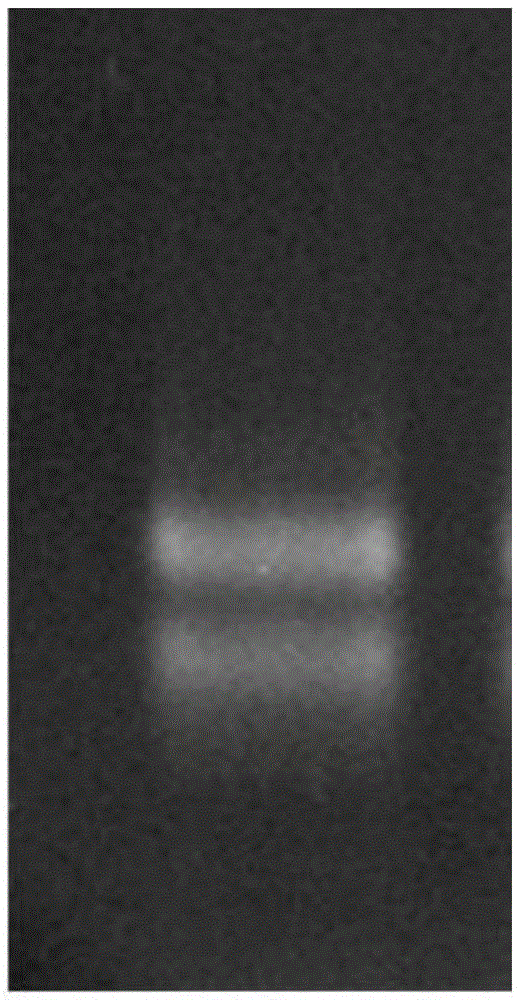A method for efficiently extracting microbial total RNA from anaerobic granular sludge
An anaerobic granular sludge and microbial technology, applied in the field of environmental molecular biology, can solve the problems of not being suitable for activated sludge, unable to reflect the real state, and not suitable for activated sludge, so as to promote stability and impurity residues. The effect of reducing and simplifying the extraction steps
- Summary
- Abstract
- Description
- Claims
- Application Information
AI Technical Summary
Problems solved by technology
Method used
Image
Examples
Embodiment 1
[0049] Activated granular sludge samples were taken from the sewage treatment plant of Futian Pharmaceutical Co., Ltd., Yucheng City, Shandong Province.
[0050] Take 10mL of activated sludge and centrifuge at 8000r / min at 4°C for 5min in a 15mL sterilized centrifuge tube. After discarding the supernatant, add 3g of sterilized glass beads (diameter 2-3mm) and 1.4mL of stock solution I into the tube. Tighten the cap of the centrifuge tube and place it in a vortex mixer for 5 minutes to deflocculate and wash the sludge to remove humic acid. Centrifuge at 8000r / min at 4°C for 5 minutes. Discard the supernatant. Repeat the treatment once and buffer with phosphate. The sludge was washed once with liquid PBS, and the pellet was used for cell lysis. Take a certain amount of pretreated sludge sample and add 100 μL common storage solution II, incubate at 37°C for 10 minutes, add 1 mL TRIzol, vortex for 5 minutes, centrifuge at 10,000 r / min for 10 minutes, take the supernatant and add 2...
Embodiment 2
[0055] The activated granular sludge samples were taken from the sewage treatment plant of Baolingbao Co., Ltd., Yucheng City, Shandong Province.
[0056] Take 10mL of activated sludge and centrifuge at 8000r / min at 4°C for 5min in a 15mL sterilized centrifuge tube. After discarding the supernatant, add 3g of sterilized glass beads (diameter 2-3mm) and 1.4mL of stock solution I into the tube. Tighten the cap of the centrifuge tube and place it in a vortex mixer for 5 minutes to deflocculate and wash the sludge to remove humic acid. Centrifuge at 8000r / min at 4°C for 5 minutes. Discard the supernatant. Repeat the treatment once and buffer with phosphate. The sludge was washed once with liquid PBS, and the pellet was used for cell lysis. Take a certain amount of pretreated sludge sample and add 100 μL common storage solution II, incubate at 37°C for 10 minutes, add 1 mL TRIzol, vortex for 5 minutes, centrifuge at 10,000 r / min for 10 minutes, take the supernatant and add 200 μL c...
PUM
| Property | Measurement | Unit |
|---|---|---|
| diameter | aaaaa | aaaaa |
Abstract
Description
Claims
Application Information
 Login to View More
Login to View More - R&D
- Intellectual Property
- Life Sciences
- Materials
- Tech Scout
- Unparalleled Data Quality
- Higher Quality Content
- 60% Fewer Hallucinations
Browse by: Latest US Patents, China's latest patents, Technical Efficacy Thesaurus, Application Domain, Technology Topic, Popular Technical Reports.
© 2025 PatSnap. All rights reserved.Legal|Privacy policy|Modern Slavery Act Transparency Statement|Sitemap|About US| Contact US: help@patsnap.com



